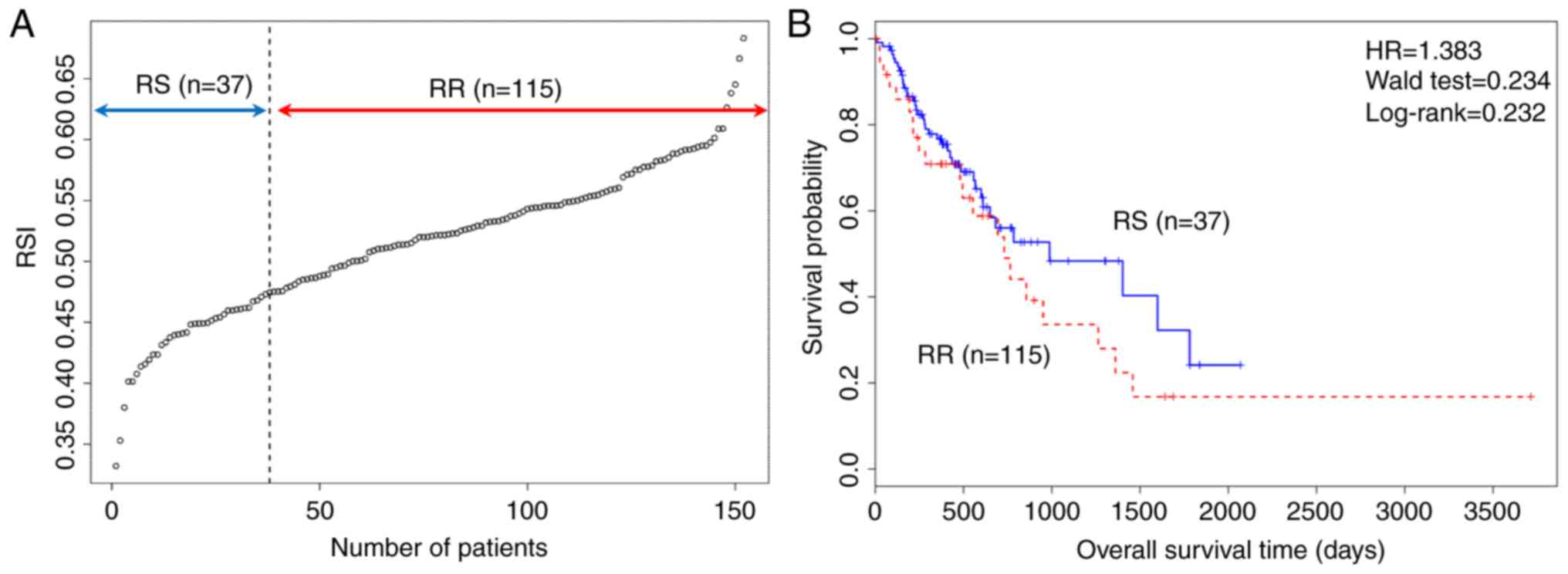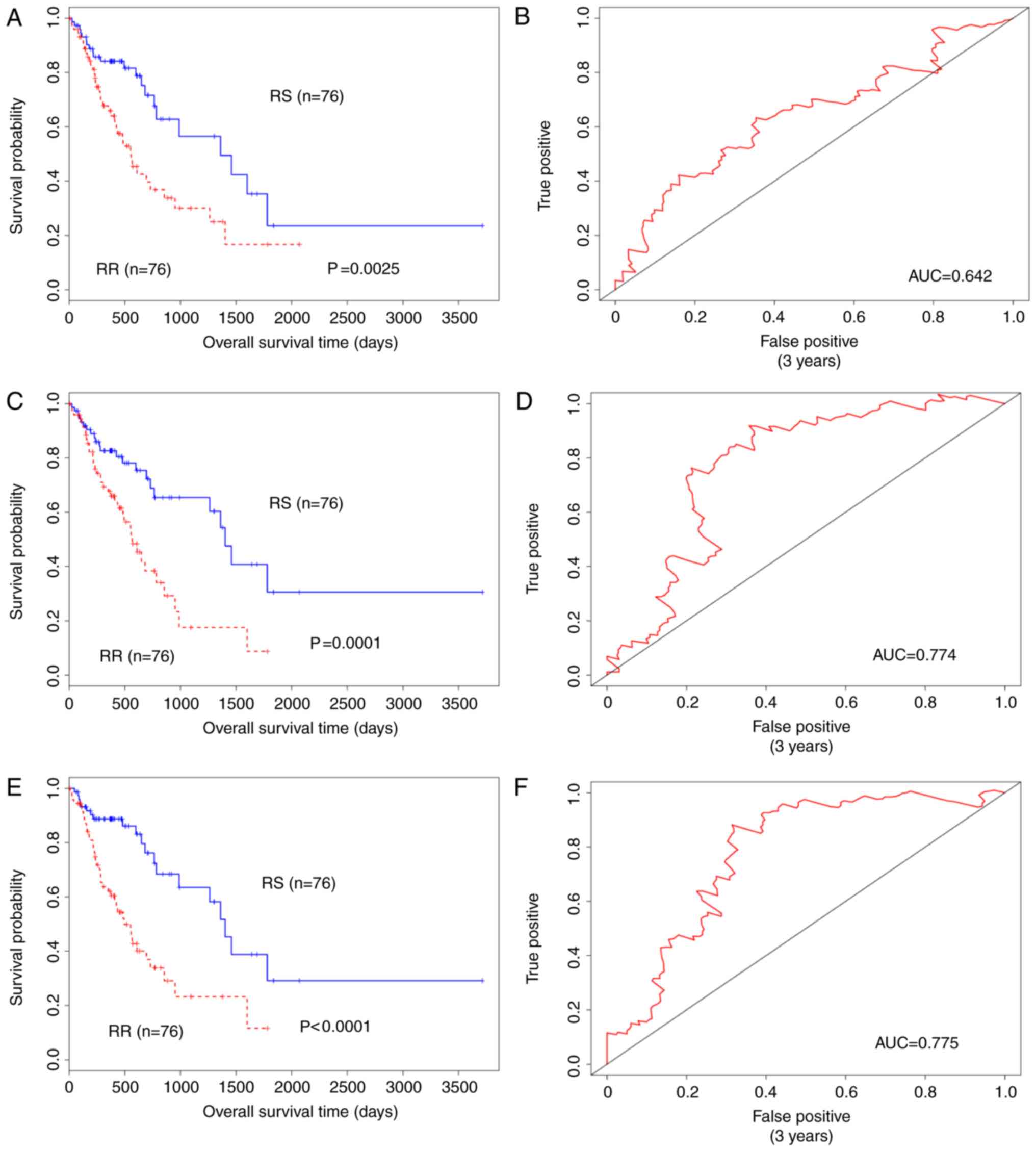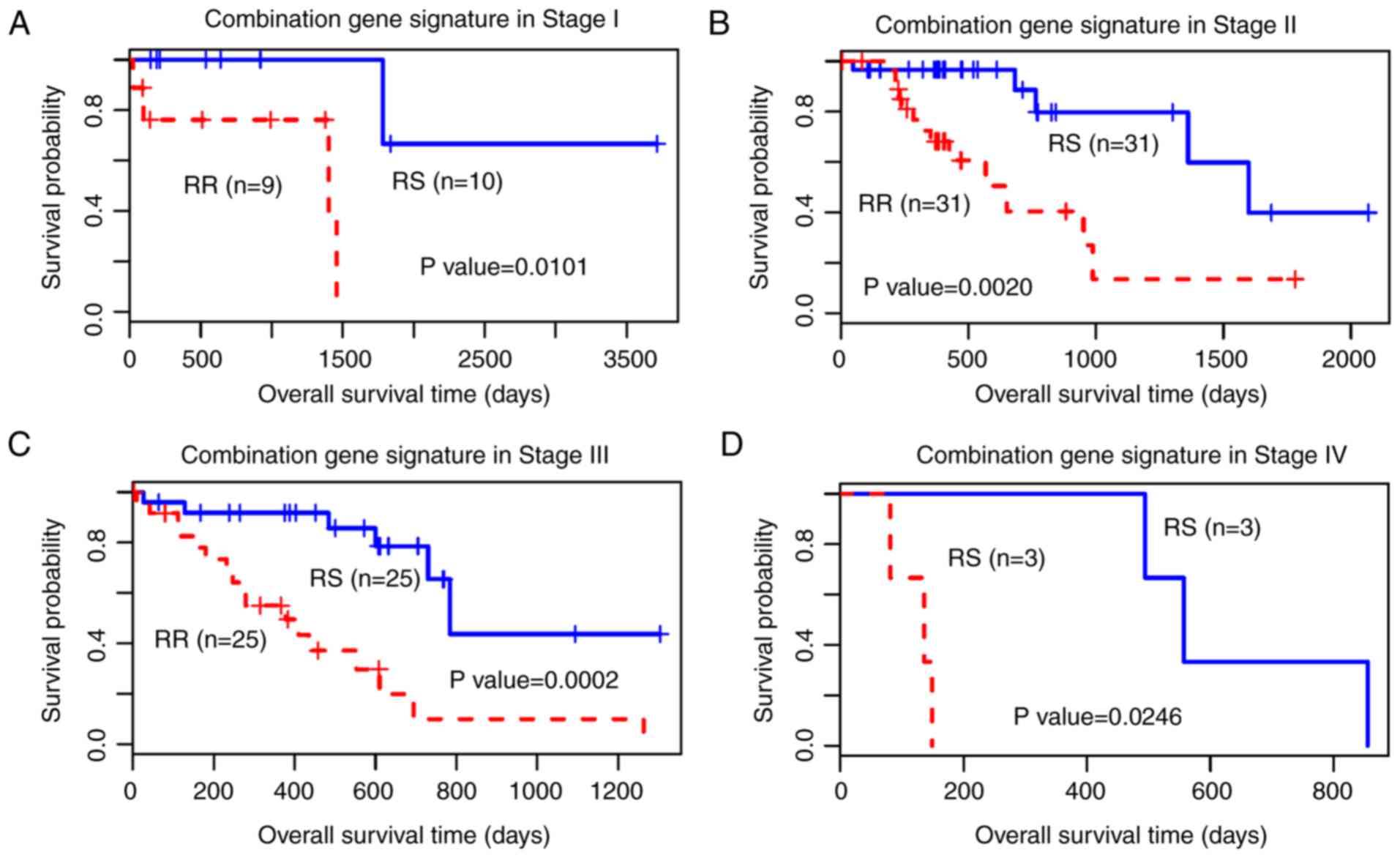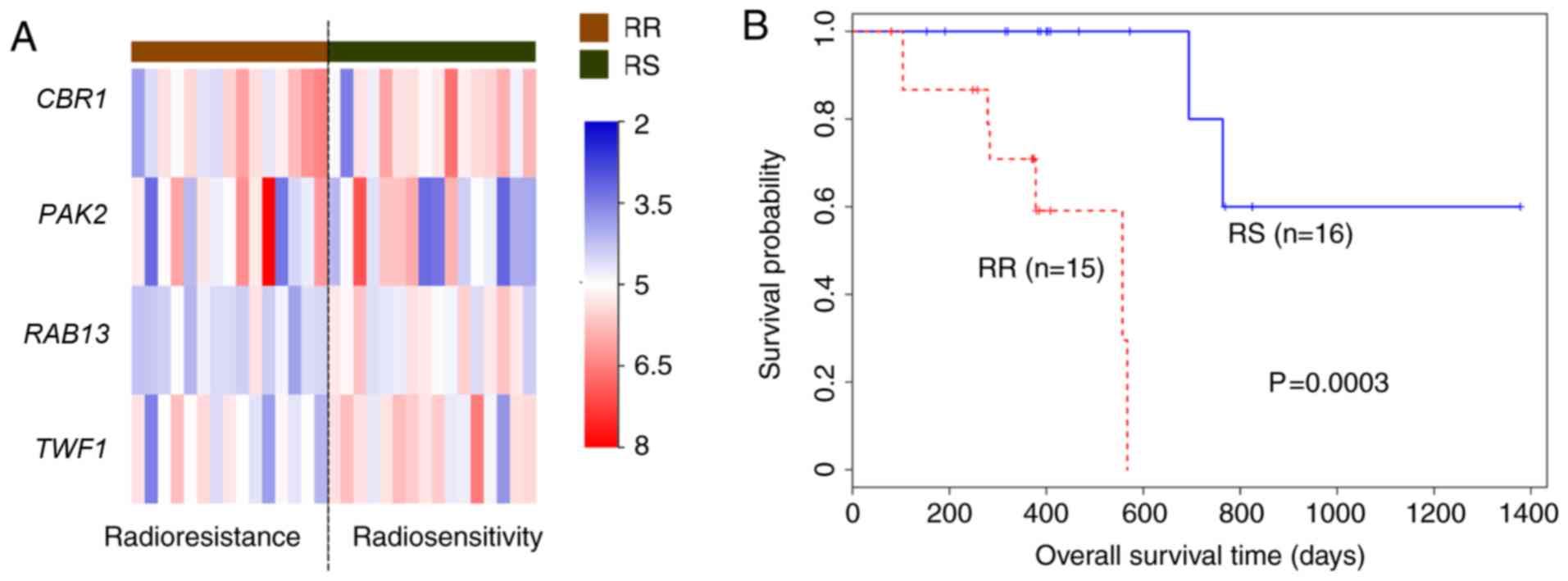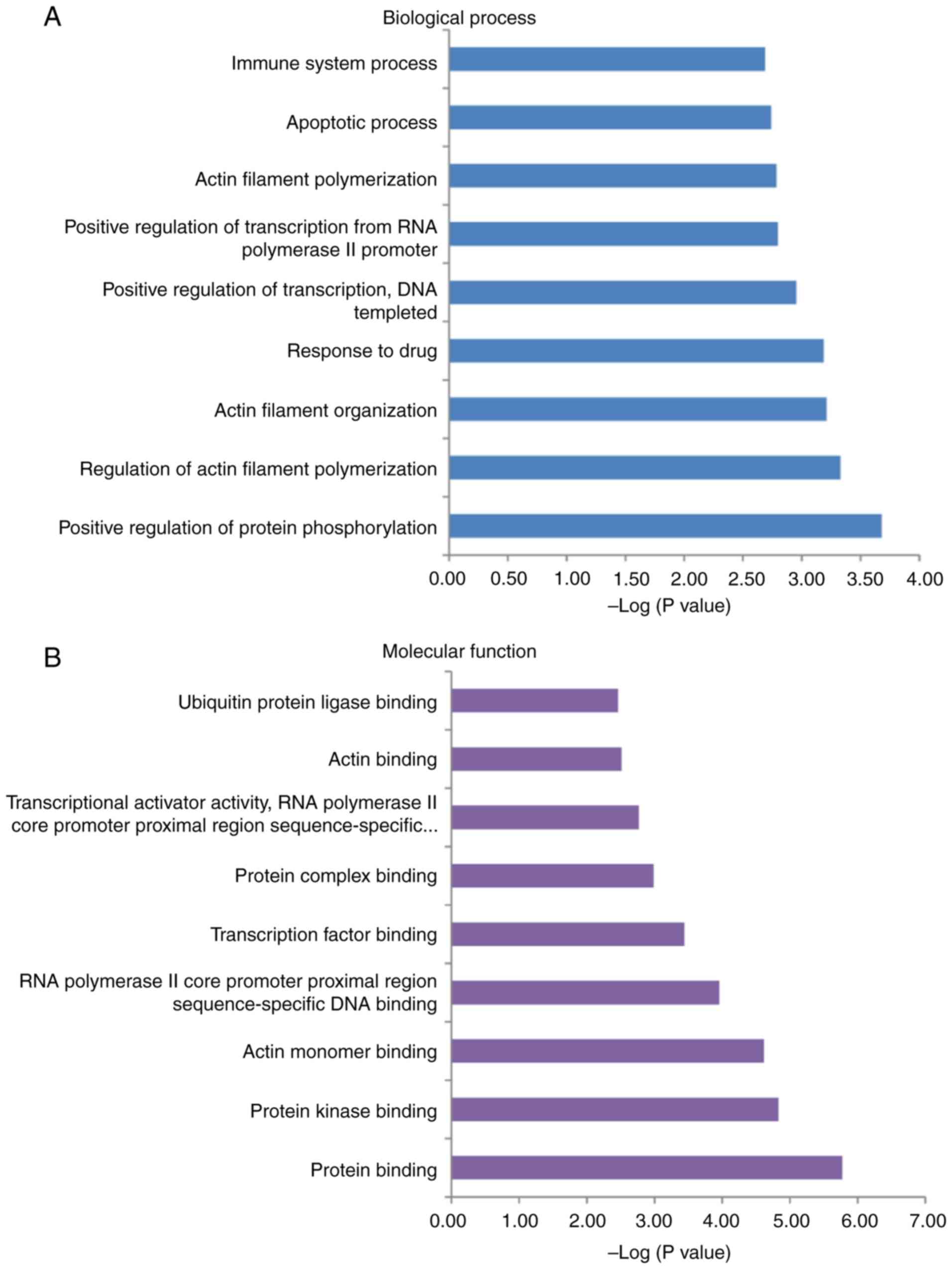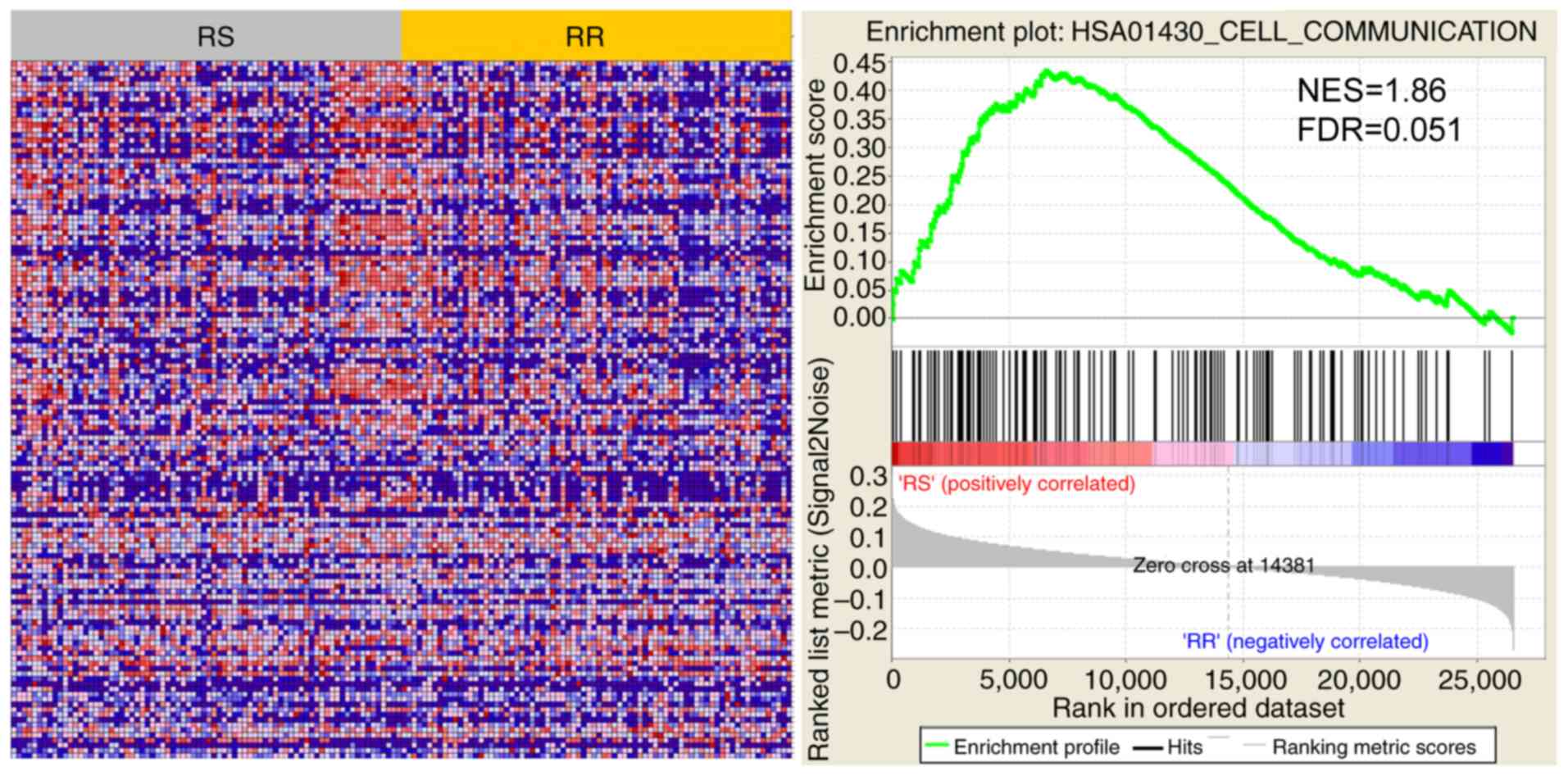|
1
|
Siegel RL, Miller KD and Jemal A: Cancer
statistics, 2016. CA Cancer J Clin. 66:7–30. 2016. View Article : Google Scholar : PubMed/NCBI
|
|
2
|
Chen W, Zheng R, Baade PD, Zhang S, Zeng
H, Bray F, Jemal A, Yu XQ and He J: Cancer statistics in China,
2015. CA Cancer J Clin. 66:115–132. 2016. View Article : Google Scholar : PubMed/NCBI
|
|
3
|
Ng J and Lee P: The role of radiotherapy
in localized esophageal and gastric cancer. Hematol Oncol Clin
North Am. 31:453–468. 2017. View Article : Google Scholar : PubMed/NCBI
|
|
4
|
Ravi S, Khaldoun A, Meredith KL, Biagioli
MC, Chuong MD, Cruz A and Hoffe SE: Radiation therapy and
esophageal cancer. Cancer Control. 20:97–110. 2013. View Article : Google Scholar : PubMed/NCBI
|
|
5
|
Altorki N and Harrison S: What is the role
of neoadjuvant chemotherapy, radiation, and adjuvant treatment in
resectable esophageal cancer? Ann Cardiothorac Surg. 6:167–174.
2017. View Article : Google Scholar : PubMed/NCBI
|
|
6
|
Scott JG, Berglund A, Schell MJ, Mihaylov
I, Fulp WJ, Yue B, Welsh E, Caudell JJ, Ahmed K, Strom TS, et al: A
genome-based model for adjusting radiotherapy dose (GARD): A
retrospective, cohort-based study. Lancet Oncol. 18:202–211. 2017.
View Article : Google Scholar : PubMed/NCBI
|
|
7
|
Begg AC: Predicting response to
radiotherapy: Evolutions and revolutions. Int J Radiat Biol.
85:825–836. 2009. View Article : Google Scholar : PubMed/NCBI
|
|
8
|
Amundson SA, Do KT, Vinikoor LC, Lee RA,
Koch-Paiz CA, Ahn J, Reimers M, Chen Y, Scudiero DA, Weinstein JN,
et al: Integrating global gene expression and radiation survival
parameters across the 60 cell lines of the national cancer
institute anticancer drug screen. Cancer Res. 68:415–424. 2008.
View Article : Google Scholar : PubMed/NCBI
|
|
9
|
Lynam-Lennon N, Reynolds JV, Marignol L,
Sheils OM, Pidgeon GP and Maher SG: MicroRNA-31 modulates tumour
sensitivity to radiation in oesophageal adenocarcinoma. J Mol Med
(Berl). 90:1449–1458. 2012. View Article : Google Scholar : PubMed/NCBI
|
|
10
|
Chen GZ, Zhu HC, Dai WS, Zeng XN, Luo JH
and Sun XC: The mechanisms of radioresistance in esophageal
squamous cell carcinoma and current strategies in radiosensitivity.
J Thorac Dis. 9:849–859. 2017. View Article : Google Scholar : PubMed/NCBI
|
|
11
|
Fukuda K, Sakakura C, Miyagawa K, Kuriu Y,
Kin S, Nakase Y, Hagiwara A, Mitsufuji S, Okazaki Y, Hayashizaki Y
and Yamagishi H: Differential gene expression profiles of
radioresistant oesophageal cancer cell lines established by
continuous fractionated irradiation. Br J Cancer. 91:1543–1550.
2004. View Article : Google Scholar : PubMed/NCBI
|
|
12
|
Eschrich S, Zhang H, Zhao H, Boulware D,
Lee JH, Bloom G and Torres-Roca JF: Systems biology modeling of the
radiation sensitivity network: A biomarker discovery platform. Int
J Radiat Oncol Biol Phys. 75:497–505. 2009. View Article : Google Scholar : PubMed/NCBI
|
|
13
|
Kim HS, Kim SC, Kim SJ, Park CH, Jeung HC,
Kim YB, Ahn JB, Chung HC and Rha SY: Identification of a
radiosensitivity signature using integrative metaanalysis of
published microarray data for NCI-60 cancer cells. BMC Genomics.
13:3482012. View Article : Google Scholar : PubMed/NCBI
|
|
14
|
Eschrich SA, Fulp WJ, Pawitan Y, Foekens
JA, Smid M, Martens JW, Echevarria M, Kamath V, Lee JH, Harris EE,
et al: Validation of a radiosensitivity molecular signature in
breast cancer. Clin Cancer Res. 18:5134–5143. 2012. View Article : Google Scholar : PubMed/NCBI
|
|
15
|
Torres-Roca JF, Erho N, Vergara I,
Davicioni E, Jenkins RB, Den RB, Dicker AP and Eschrich SA: A
molecular signature of radiosensitivity (rsi) is an rt-specific
biomarker in prostate cancer. Int J Radiat Oncol Biol Phy. 90
(Suppl):S1572014. View Article : Google Scholar
|
|
16
|
Creelan B, Eschrich SA, Fulp WJ and
Torres-Roca JF: A gene expression platform to predict benefit from
adjuvant external beam radiation in resected non-small cell lung
cancer. Int J Radiat Oncol Biol Phys. 90 (Suppl):S76–S77. 2014.
View Article : Google Scholar
|
|
17
|
Torres-Roca JF, Fulp WJ, Caudell JJ,
Servant N, Bollet MA, van de Vijver M, Naghavi AO, Harris EE and
Eschrich SA: Integration of a radiosensitivity molecular signature
into the assessment of local recurrence risk in breast cancer. Int
J Radiat Oncol Biol Phys. 93:631–638. 2015. View Article : Google Scholar : PubMed/NCBI
|
|
18
|
Strom T, Hoffe SE, Fulp W, Frakes J,
Coppola D, Springett GM, Malafa MP, Harris CL, Eschrich SA,
Torres-Roca JF and Shridhar R: Radiosensitivity index predicts for
survival with adjuvant radiation in resectable pancreatic cancer.
Radiother Oncol. 117:159–164. 2015. View Article : Google Scholar : PubMed/NCBI
|
|
19
|
Ahmed KA, Fulp WJ, Berglund AE, Hoffe SE,
Dilling TJ, Eschrich SA, Shridhar R and Torres-Roca JF: Differences
between colon cancer primaries and metastases using a molecular
assay for tumor radiation sensitivity suggest implications for
potential oligometastatic SBRT patient selection. Int J Radiat
Oncol Biol Phys. 92:837–842. 2015. View Article : Google Scholar : PubMed/NCBI
|
|
20
|
Ahmed KA, Chinnaiyan P, Fulp WJ, Eschrich
S, Torresroca JF and Caudell JJ: The radiosensitivity index
predicts for overall survival in glioblastoma. Oncotarget.
6:34414–34422. 2015. View Article : Google Scholar : PubMed/NCBI
|
|
21
|
Eschrich SA, Pramana J, Zhang H, Zhao H,
Boulware D, Lee JH, Bloom G, Rocha-Lima C, Kelley S, Calvin DP, et
al: A gene expression model of intrinsic tumor radiosensitivity:
Prediction of response and prognosis after chemoradiation. Int J
Radiat Oncol Biol Phys. 75:489–496. 2009. View Article : Google Scholar : PubMed/NCBI
|
|
22
|
Corneil TA, Kuyper LM, Shoveller J, Hogg
RS, Li K, Spittal PM, Schechter MT and Wood E: Unstable housing,
associated risk behaviour, and increased risk for HIV infection
among injection drug users. Health Place. 12:79–85. 2006.
View Article : Google Scholar : PubMed/NCBI
|
|
23
|
Kempe P, Van Oppen P, De Haan E, Twisk JW,
Sluis A, Smit JH, van Dyck R and van Balkom AJ: Predictors of
course in obsessive-compulsive disorder: Logistic regression versus
Cox regression for recurrent events. Acta Psychiatr Scand.
116:201–210. 2007. View Article : Google Scholar : PubMed/NCBI
|
|
24
|
Huang DW, Sherman BT and Lempicki RA:
Systematic and integrative analysis of large gene lists using DAVID
bioinformatics resources. Nat Protoc. 4:44–57. 2009. View Article : Google Scholar : PubMed/NCBI
|
|
25
|
Huang DW, Sherman BT and Lempicki RA:
Bioinformatics enrichment tools: Paths toward the comprehensive
functional analysis of large gene lists. Nucleic Acids Res.
37:1–13. 2009. View Article : Google Scholar : PubMed/NCBI
|
|
26
|
Subramanian A, Tamayo P, Mootha VK,
Mukherjee S, Ebert BL, Gillette MA, Paulovich A, Pomeroy SL, Golub
TR, Lander ES and Mesirov JP: Gene set enrichment analysis: A
knowledge-based approach for interpreting genome-wide expression
profiles. Proc Natl Acad Sci USA. 102:15545–15550. 2005. View Article : Google Scholar : PubMed/NCBI
|
|
27
|
Schena M, Battaglia AF and Munoz F:
Esophageal cancer developed in a radiated field: Can we reduce the
risk of a poor prognosis cancer? J Thorac Dis. 9:1767–1771. 2017.
View Article : Google Scholar : PubMed/NCBI
|
|
28
|
Guo Y, Zhu XD, Qu S, Li L, Su F, Li Y,
Huang ST and Li DR: Identification of genes involved in
radioresistance of nasopharyngeal carcinoma by integrating gene
ontology and protein-protein interaction networks. Int J Oncol.
40:85–92. 2012.PubMed/NCBI
|
|
29
|
Looby E, Abdel-Latif MMM, Morales VA and
Kelleher D: Bile acid exposure induces activation of the
extracellular signal-regulated kinase and the transcription factor
AP-1 in esophageal cancer cells. Gastroenterology. 124:A2762003.
View Article : Google Scholar
|
|
30
|
Liu F, Rehmani I, Esaki S, Fu R, Chen L,
de Serrano V and Liu A: Pirin is an iron-dependent redox regulator
of NF-κB. Proc Nati Acad Sci USA. 110:9722–9727. 2013. View Article : Google Scholar
|
|
31
|
Maher S, Lynamlennon N and Reynolds J:
Differential gene expression profiles as markers of radioresistance
in esophageal cancer. Cancer Res. 68:2008.
|
|
32
|
Ogawa R, Ishiguro H, Kuwabara Y, Kimura M,
Mitsui A, Mori Y, Mori R, Tomoda K, Katada T, Harada K and Fujii Y:
Identification of candidate genes involved in the radiosensitivity
of esophageal cancer cells by microarray analysis. Dis Esophagus.
21:288–297. 2008. View Article : Google Scholar : PubMed/NCBI
|
|
33
|
Allalunis-Turner MJ, Zia PK, Barron GM,
Mirzayans R and Day RS III: Radiation-induced DNA damage and repair
in cells of a radiosensitive human malignant glioma cell line.
Radiat Res. 144:288–293. 1995. View Article : Google Scholar : PubMed/NCBI
|
|
34
|
Chen Y, Li Z, Dong Z, Beebe J, Yang K, Fu
L and Zhang JT: 14-3-3sigma contributes to radioresistance by
regulating DNA repair and cell cycle via PARP1 and CHK2. Mol Cancer
Res. 15:418–428. 2017. View Article : Google Scholar : PubMed/NCBI
|
|
35
|
Pugh TJ, Keyes M, Barclay L, Delaney A,
Krzywinski M, Thomas D, Novik K, Yang C, Agranovich A, McKenzie M,
et al: Sequence variant discovery in DNA repair genes from
radiosensitive and radiotolerant prostate brachytherapy patients.
Clin Cancer Res. 15:5008–5016. 2009. View Article : Google Scholar : PubMed/NCBI
|
|
36
|
Yi HM, Yi H, Zhu JF, Xiao T, Lu SS, Guan
YJ and Xiao ZQ: A five-variable signature predicts radioresistance
and prognosis in nasopharyngeal carcinoma patients receiving
radical radiotherapy. Tumor Biol. 37:2941–2949. 2016. View Article : Google Scholar
|
|
37
|
Bing Z, Tian J, Zhang J, Li X, Wang X and
Yang K: An integrative model of miRNA and mRNA expression signature
for patients of breast invasive carcinoma with radiotherapy
prognosis. Cancer Biother Radiopharm. 31:253–260. 2016. View Article : Google Scholar : PubMed/NCBI
|
|
38
|
Zhou J, Wu X, Li G, Gao X, Zhai M, Chen W,
Hu H and Tang Z: Prediction of radiosensitive patients with gastric
cancer by developing gene signature. Int J Oncol. 51:1067–1076.
2017. View Article : Google Scholar : PubMed/NCBI
|
|
39
|
Vasireddy RS, Sprung CN, Cempaka NL, Chao
M and Mckay MJ: H2AX phosphorylation screen of cells from
radiosensitive cancer patients reveals a novel DNA double-strand
break repair cellular phenotype. Br J Cancer. 102:1511–1518. 2010.
View Article : Google Scholar : PubMed/NCBI
|
|
40
|
Jacobs KM, Misri S, Meyer B, Raj S, Zobel
CL, Sleckman BP, Hallahan DE and Sharma GG: Unique epigenetic
influence of H2AX phosphorylation and H3K56 acetylation on normal
stem cell radioresponses. Mol Biol Cell. 27:1332–1345. 2016.
View Article : Google Scholar : PubMed/NCBI
|
|
41
|
Jaiswal R, Raymond Grau GE and Bebawy M:
Cellular communication via microparticles: Role in transfer of
multidrug resistance in cancer. Future Oncol. 10:655–669. 2014.
View Article : Google Scholar : PubMed/NCBI
|















